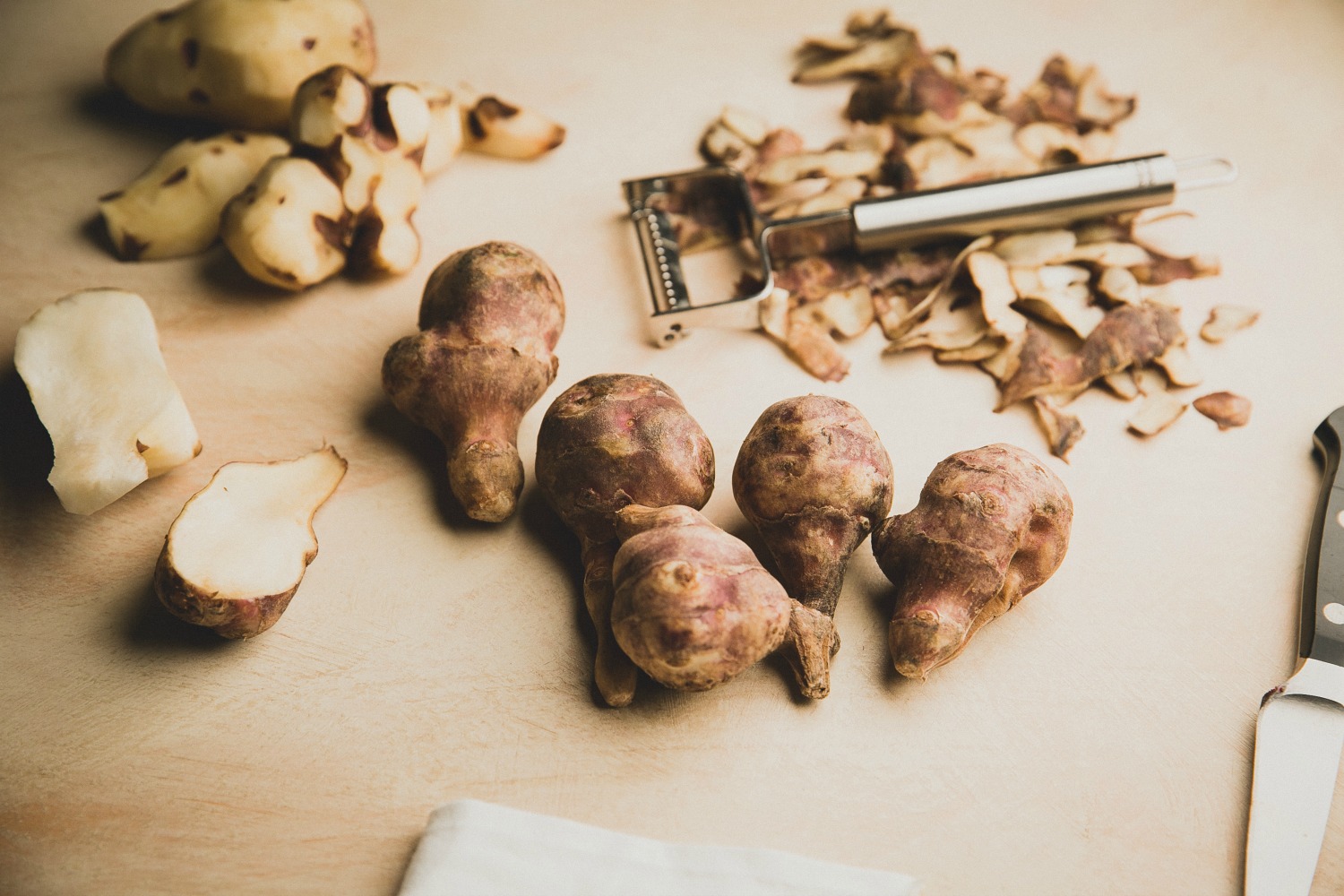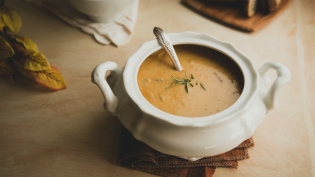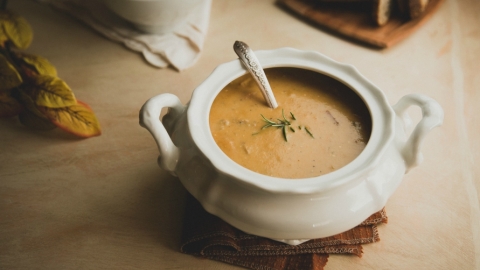Jerusalem Artichokes Bring a World of Flavor to Your Table
Don’t let the name deceive you, Jerusalem artichokes are artichokes in name only. Although the two vegetables are distantly related members of the daisy family, the similarities end there. The name came from the Italian settlers in our country who called the plant “girasole,” meaning sunflower, aptly named for its resemblance to the garden sunflower. “Girasole” was often mispronounced, hence the name Jerusalem, while artichoke came from the fact that the plant tastes very much like its namesake.
The Jerusalem artichoke goes by a variety of names, including sunchoke, sun root, earth apple or topinambour. The plant grows from eastern Canada and Maine, west to North Dakota and south to northern Florida and Texas. Before the arrival of Europeans, Native Americans cultivated the plant as a food source. When the early Europeans arrived, they sent the tubers back to Europe where it became a popular crop. The Jerusalem artichoke fell into relative obscurity in North America but was successfully brought back in the late 1900s and early 2000s.
The plant is easy to grow, cultivated for its tuber, which is consumed as a root vegetable. Strangely, even a small piece of tuber will grow if left in the ground. Because of this ability, the Jerusalem artichoke can ruin gardens by smothering nearby plants and taking over large areas. Farmers who grow them and wish to rotate their fields have at times had to use weed killer to stop their spread. Each root can make an additional 75 to 200 tubers during a year’s time.
Tubers store their carbohydrates as “inulin” (not to be confused with insulin), rather than starch. Because it is not digested naturally, inulin is known to have an Ex-Lax effect on some people’s digestive systems. As inulin may cause gas and bloating in certain folks, it is best to start out with a small sampling of the vegetable. Many people have no problem at all, but those with genetic fructose problems should be wary.
Jerusalem artichokes are found in the produce section of the supermarket under the name “sunchokes” and are usually available year round. Peak season for them is fall and early spring. The vegetable will not wreck your food budget as it is relatively inexpensive. Note that the tubers look very much like ginger. Since they are not in great demand, be sure to examine the package carefully to make sure that your selection is fresh. When shopping for sunchokes, select those that are firm to the touch and free of black spots and blemishes. Look for those with fewer knobs to avoid waste when peeling. Remember, the older the sunchoke, the spongier it will become, a problem that should be avoided. Some varieties are elongated, much like fingerling potatoes. Skin tones may vary from light brown to creamy, while others have a pink or reddish hue. The plant’s interior can be white, cream, tan or even purple colored. If stored in the produce drawer, the tubers should last two to three weeks. Once refrigerated, the plant’s inulin is converted to fructose, causing the tubers to develop a sweeter taste.
Sunchokes can be used as a substitute for potatoes because they have a similar texture but a sweeter nuttier flavor. Served raw and thinly sliced, they are ideal for use in salads, with a crispness much like water chestnuts. Since they grow under- ground, make sure to always scrub and thoroughly clean the root with a vegetable brush. Some folks like to peel the skin before cooking, others prefer to do so afterward, when it is easier to remove, and still others opt to leave on the skin— it’s all about personal preference. Jerusalem artichokes can be sliced and roasted like potatoes, sautéed or made into a gratin. The French are famous for their creamy sunchoke soup, but the root vegetable is also good pureed (make sure to peel first) and mixed with cream and butter.
Sunchokes oxidize when exposed to air, just like apples and potatoes. To avoid this problem, toss with a little lemon juice before cooking. When making a puree or soup, add a pinch of tartar or lemon juice to the cooking water to prevent your tubers from turning gray, an issue caused by the vegetable’s high iron content.
The knobby tubers are high in fiber, have negligible amounts of fat and zero cholesterol. They contain more potassium than most vegetables and are a good source of iron and copper. With 2% protein, no oil and a lack of starch, the Jerusalem artichoke adds a healthy, flavorful touch to any table.
Tracey Medeiros likes to keep it local and seasonal in her kitchen.







